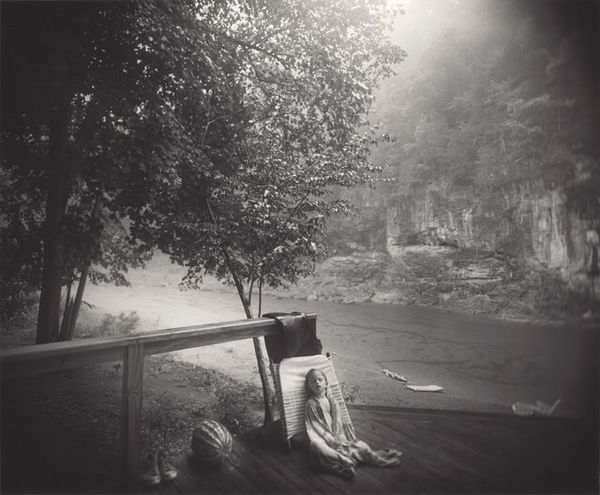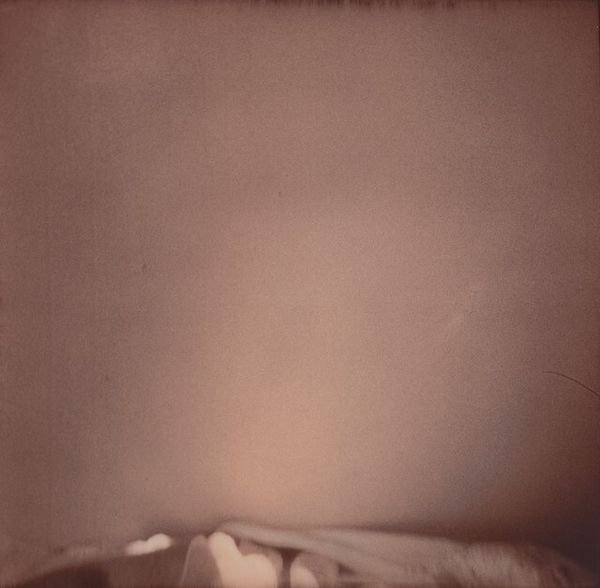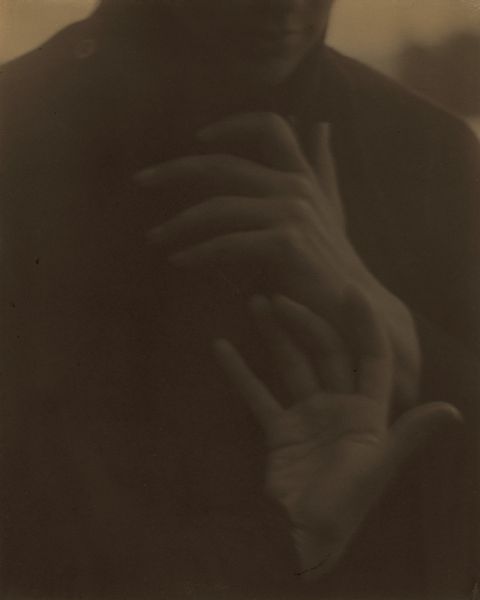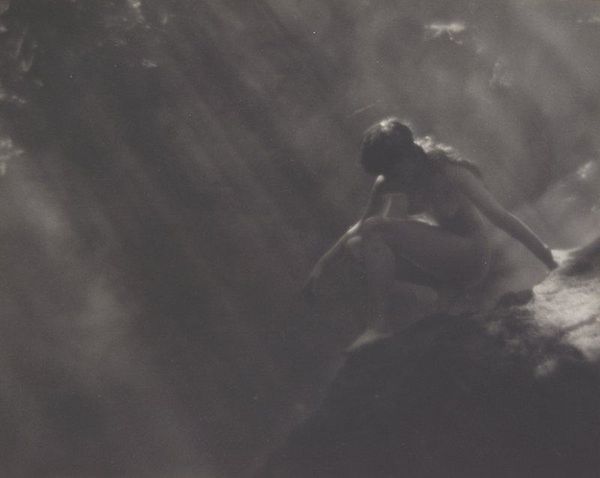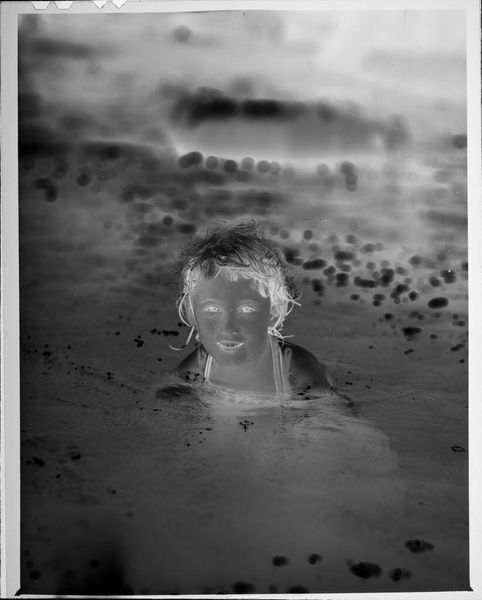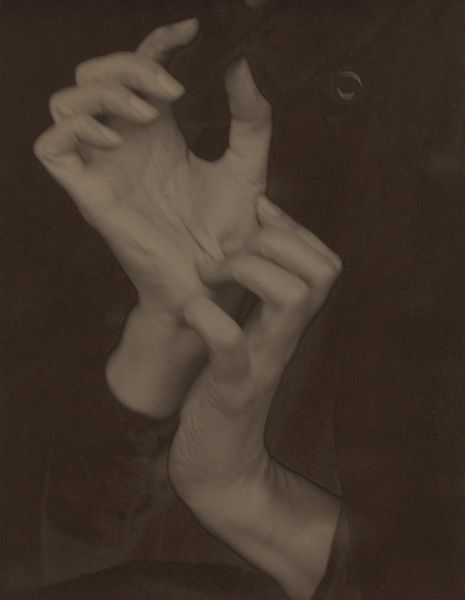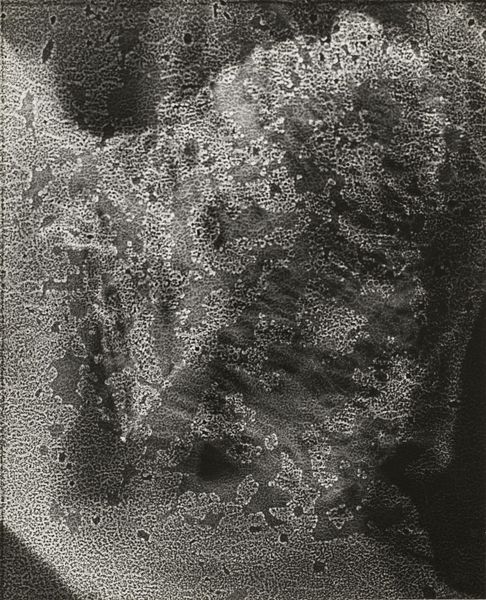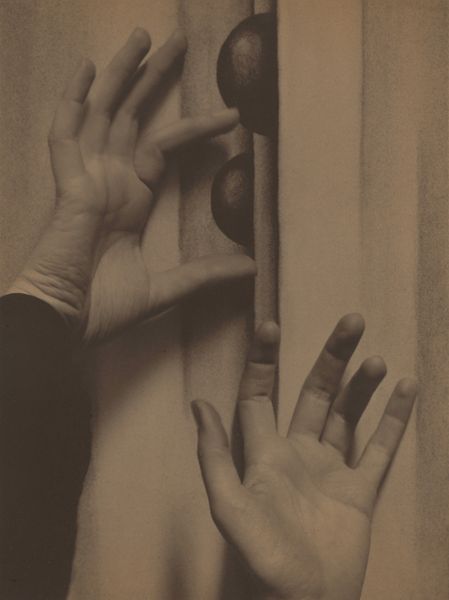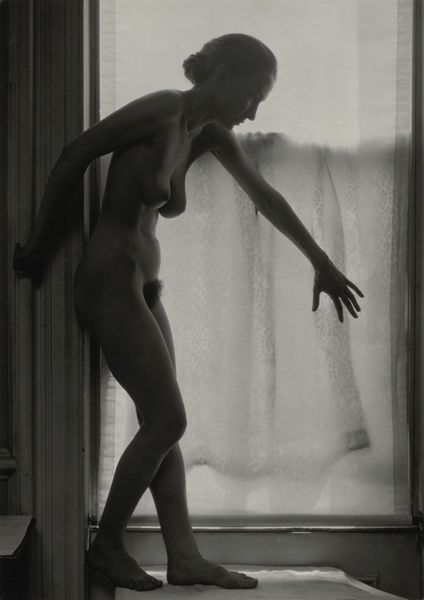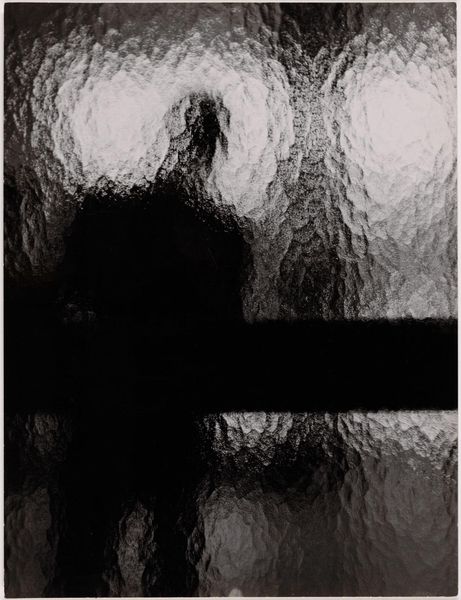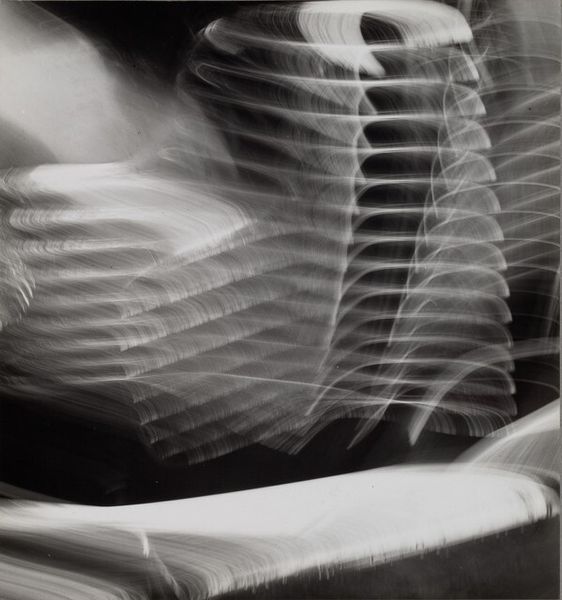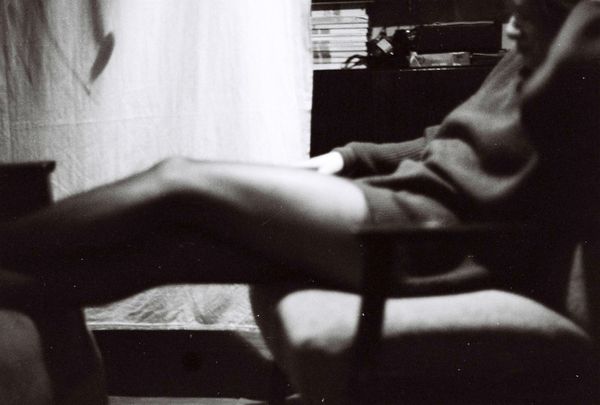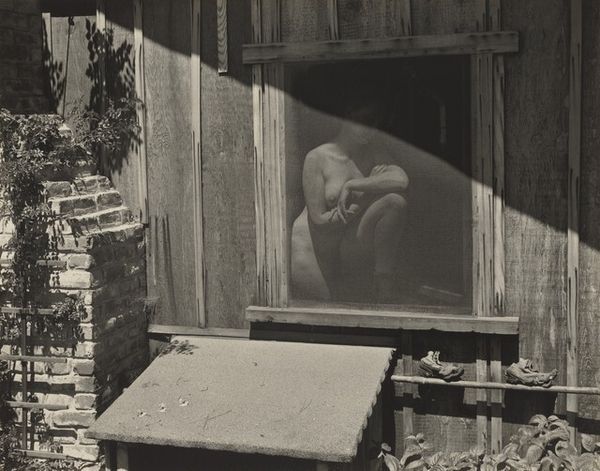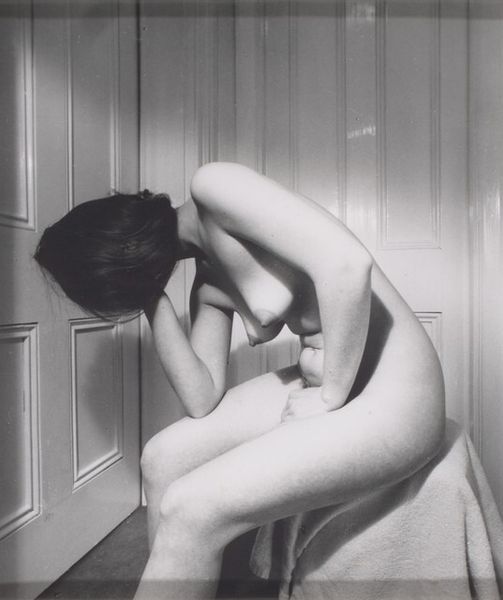
Dimensions: image: 38.1 × 34.29 cm (15 × 13 1/2 in.) image (image window in mat board): 36.83 × 33.02 cm (14 1/2 × 13 in.) sheet: 53.34 × 49.53 cm (21 × 19 1/2 in.) framed: 55.25 × 50.8 × 3.49 cm (21 3/4 × 20 × 1 3/8 in.)
Copyright: National Gallery of Art: CC0 1.0
Curator: Sally Mann's "Ponder Heart," a gelatin-silver print from 2009, immediately strikes me as a masterclass in tonal gradation. The subtle shifts from dark to light create an almost ethereal quality. Editor: It evokes a powerful sense of vulnerability, doesn't it? The back turned away, the blurred edges – it's as if we're witnessing a moment of profound introspection. Given Mann's long engagement with the body and representations of childhood, I can't help but read into its broader themes of innocence, the loss of it, and perhaps even questions of autonomy. Curator: Undoubtedly, the subject matter lends itself to such readings. However, let's not overlook the exquisite technique at play here. The almost painterly quality of the silver gelatin print, the way Mann coaxes light and shadow to define form... it's masterful. Look at how the texture on the pane intersects and interplays with the skin of the subject. The framing in monochrome certainly enhances the impact, highlighting those elements of texture and tone that define its structural composition. Editor: Agreed. It is beautiful. But that beauty doesn't exist in a vacuum. Mann's work has always been provocative, prompting vital conversations about the gaze, the ethics of representation, particularly when children are involved. A nude form shot by a woman is distinctly positioned within feminist perspectives concerning who gets to represent who, and for what audience. This photograph engages and perhaps disrupts many art-historical conventions. Curator: A fair point. And certainly, a feminist perspective sheds light on how Mann inverts traditional power dynamics, offering a refreshing perspective of form, vulnerability and a subjective point of view, away from the classical conventions that can often fetishize and dehumanize the very subject on display. It certainly transcends being merely about pretty pictures. It's art that compels and asks us to actively think as viewers. Editor: It also reminds us that art exists in a constant dialogue with the culture around it. We must approach such photography prepared to engage and assess what our perspectives and investments bring. Thank you for engaging. Curator: Indeed. Understanding the form provides the grounds for richer inquiry. Thanks to you as well.
Comments
No comments
Be the first to comment and join the conversation on the ultimate creative platform.
